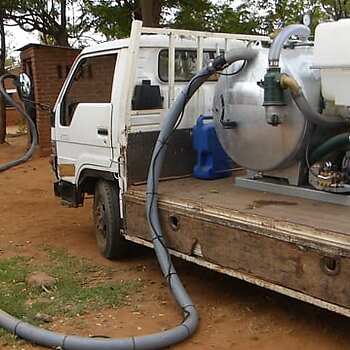Pit emptying is the only way out to continue use of onsite systems in high-density urban areas where there is no space for new pits. While other countries focus on manual emptying, UN-Habitat and the Netherlands focus on mechanical emptying.
When it comes to mechanical emptying of onsite systems, WASTE is at the heart of the matter. In 1988, WASTE starts the MAPET. Together with Oxfam GB and IFRC WASTE pioneered the ROM, see testing report and video 1, video on emptying pit latrines in Maputo by WSUP, 3 and 4. Practica, supported by WASTE, FINISH, WaterWorX and A4A developed the PuPu pump, see videos above.
UN-Habitat is also active when it comes to mechanical emptying of onsite systems. Bjorn Brandberg wrote an extensive overview of the situation in 2012 and in 2023 an overview was published where the PuPu pump is mentioned. Water for LIfe did a lot of work in developing aided manual emptying using the Gulper etc. WSUP also focuses on manual emptying see experiences of the 'dream team' in Lusaka in the video above. Opero Services in Kisumu, Kenya, offers experiences with different options.







